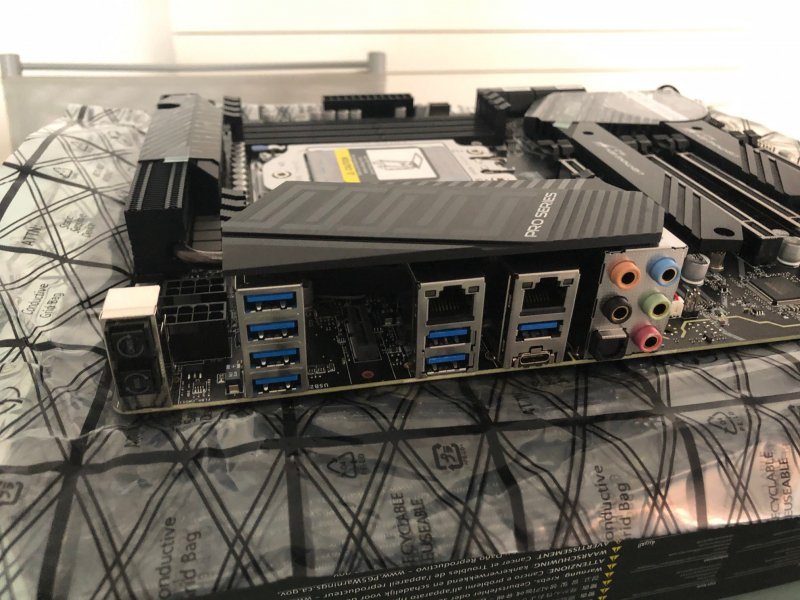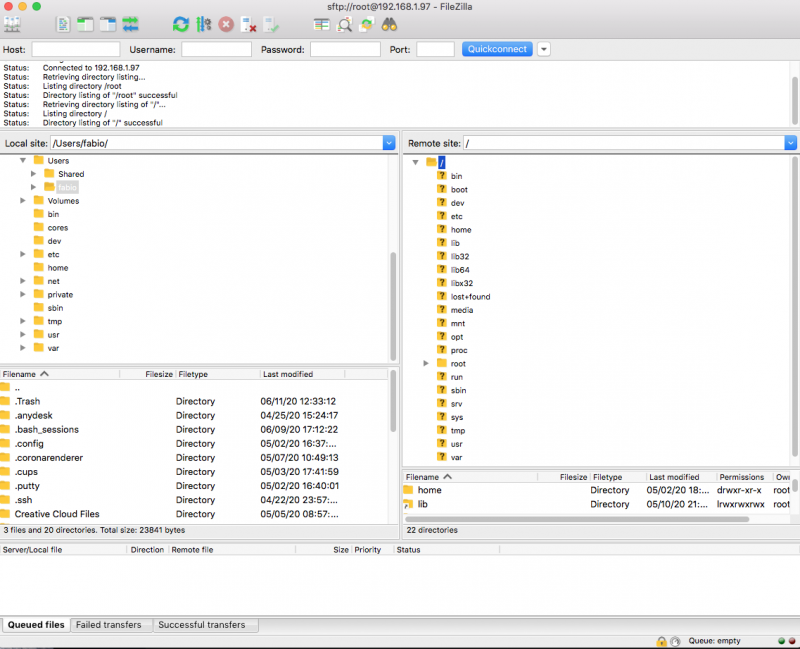-
Posts
11,684 -
Joined
-
Days Won
565
Content Type
Profiles
Forums
Events
Downloads
Everything posted by fabiosun
-
@pool92il problema e' di come viene gestito l'audio da AMD rispetto al chipset che gestisce anche la cpu come ti ho detto sopra puoi provare a risolvere con una scheda pciexpress / USB e attaccare li il tuo audio li Una scheda pcie firewire dove attacchi un audio esterno firewire. O utilizzare audio DP/HDMI gestito dalla grafica (in high sierra con Nvidia da me e' perfetto) Ma ripeto..e' un argomento ostico in quanto non c'e' soluzione certa al momento il problema e' AMD/OSX (e quindi patches) In windows non si hanno questi problemi
-
Secondo me no pero’ puoi provare ma non dovrebbe essere quello il problema
-
E si il problema è li quando lo fa l’unica è provare le cose di cui sopra la migliore chance è con la scheda pciexpress che è scollegata dal chipset della piastra... però è da provare alcuni risolvono anche attaccando l’audio attraverso un hub usb devi fare le prove con il tuo hardware purtroppo audio usb ha problemi anche con Mac veri..e amd su hack può avere problemi simili
-
L’audio interno ti fa lo stesso? nel caso puoi provare a mettere una scheda pcie con usb e collegare la tua focusrite li il mio caso è differente su Catalina audio usb mi va bene
-
ho riletto un po' tutto..il tuo problema potrebbe essere indipendente da quello che stai facendo..e potrebbe essere relativo alle patch che usi per far funzionare il tuo AMD riferito al TSC della cpu stessa se non lo hai fatto prova a spostare di USB la tua scheda audio ma ripeto..potrebbe essere un problema serio
-
con opencore ci sono due modi o installi il driver(tools) efi acpidump.efi e poi lo lanci da shell link: o con una delle ultime versioni debug hai l'opzione integrata da attivare nel config sysreport
-
Pbo is in auto mode or enabled?
-
@DriftwoodDo you use Davinci resolve for your job/hobby? if so can you test Candle scene benchmark if you have two radeon VII installed? I would like to see your results 🙂 and of all people who want to try
-
@cj750 send us a glass of scotch 😂 and yes it is a big step for you now you have the hope it can work also for you👍
-
I don't know if it is simpler or not than other motherboards, but I always wondered why other users need to block things in vfio when in my case you just have to pass them in the virtual machine configuration to be automatically passed to vfio. ... I started this journey by doing things as recommended by the proxmox wiki..to cross out all the useless things for me
-
@DriftwoodI thought you want to see other result.. 🙂
-
this is mine MSI TRX40 PRO 10G IOMMU.xls.zip
-
I have this: IOMMU Group 49: 42:08.0 PCI bridge [0604]: Advanced Micro Devices, Inc. [AMD] Device [1022:57a4] 46:00.0 Non-Essential Instrumentation [1300]: Advanced Micro Devices, Inc. [AMD] Starship/Matisse Reserved SPP [1022:1485] 46:00.1 USB controller [0c03]: Advanced Micro Devices, Inc. [AMD] Matisse USB 3.0 Host Controller [1022:149c] 46:00.3 USB controller [0c03]: Advanced Micro Devices, Inc. [AMD] Matisse USB 3.0 Host Controller [1022:149c] with: 42:08.0 PCI bridge [0604]: Advanced Micro Devices, Inc. [AMD] Device [1022:57a4] Kernel driver in use: pcieport 46:00.1 USB controller [0c03]: Advanced Micro Devices, Inc. [AMD] Matisse USB 3.0 Host Controller [1022:149c] Subsystem: Advanced Micro Devices, Inc. [AMD] Matisse USB 3.0 Host Controller [1022:1486] Kernel driver in use: vfio-pci Kernel modules: xhci_pci 46:00.3 USB controller [0c03]: Advanced Micro Devices, Inc. [AMD] Matisse USB 3.0 Host Controller [1022:149c] Subsystem: Advanced Micro Devices, Inc. [AMD] Matisse USB 3.0 Host Controller [1022:148c] Kernel driver in use: vfio-pci Kernel modules: xhci_pci these results without adding lines on vfio.conf or in blacklist.conf
-
Have you a link to buy also metal case because I have not it and it seems safer to mount a Wi-Fi bt in an original metal case
-
@cj750 I have no answer for your problem obviusly is gpu related but if you have done all things proposed here from amd gpu user... I have no idea😢
-
Post output of lspci -nnk 3:30 seems weird
-
Your vga is on 03:00 group?
-
bel bug.. pensa se devi accedere al bios per qualche modifica essenziale ci sarà qualche automatismo che sente la scheda discreta ..non puoi fare modifiche tramite di lei nel bios e poi provare?
-
@Rox67ermy motherboard has an empty slot but I thought it was a pciex1 slot thank you for your detailed tutorial 🙂
-
@Rox67erhave you a proper slot for that wifi? or you will use a pcie adapter for it?
-
hi have you ever seen proxmox logo? Could you try to comment in this way blacklist.conf?: #blacklist snd_hda_intel #blacklist snd_hda_codec_hdmi #blacklist i915 #blacklist radeon #blacklist nouveau #blacklist nvidia #blacklist i2c-nvidia-gpu #blacklist amdgpu in this way you can operate directly from your AMD and in the shell you can execute: qm start 101 and see in grub line I 'd put only: GRUB_CMDLINE_LINUX_DEFAULT="quiet amd_iommu=on video=efifb:off" and remember to run update command: update-initramfs -u -k all update-grub and then: reboot also if you can you can use FileZilla to copy your files..
-
@cj750 what do you mean when younsay it boots fine? From webinterface console window you see osx ? could you post vm conf file, blacklist.conf, modules, vfio.conf, kvm.conf? also grub file would be fine
-
si I driver sono disponibili solo sino ad High Sierra In Mojave o Catalina puoi usare la scheda (modificando i driver) ma senza nessuna accelerazione grafica
-
per la scheda grafica non ci sono driver Nvidia quindi non e' consigliabile.
-
Interessante quel fixed audio issue si sa di che si trattava riguardo questo problema?








